Ya gotta look inside...
We are no longer building saddle trees, but we have two videos about how Western saddles fit horses available on our westernsaddlefit.com website.
Maybe this post should be called "a tale of two horses".
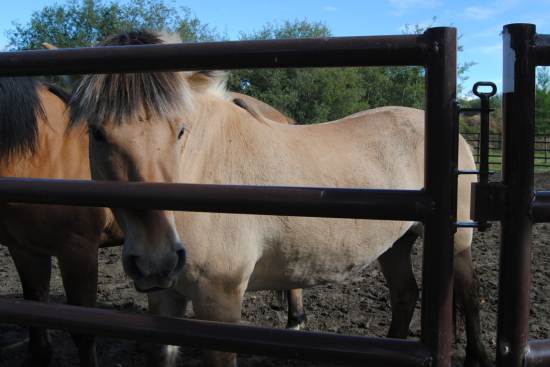
Meet Mouse. He is a Fjord. He's short. For those familiar with the Dennis Lane system, he reads D10 at A, larger than D10 at B, and D9 at C with a rock between 9 and 12. For those not familiar with the Dennis Lane system - he's wide, flat side to side and has a lot of rock in his back.
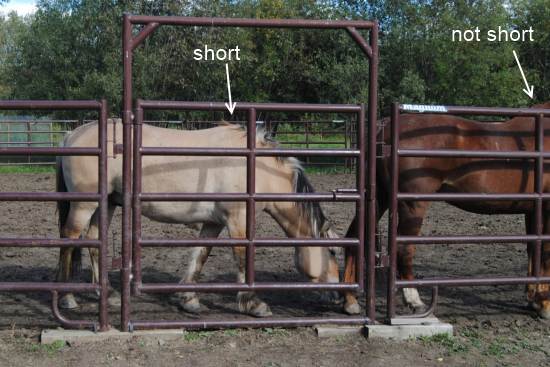
The horse ahead of him in this picture is Winston.
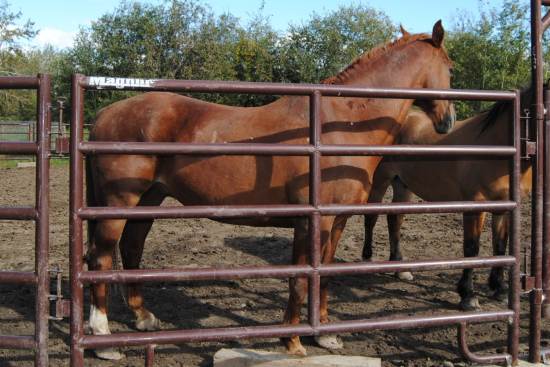
This is Winston. He's a Hanovarian/Morgan cross. He's not short. His Dennis Lane measurements are S7 at A, D6 at B and D8 at C with a rock of 6. So despite his size, his back isn't wide and he has what we use as our "standard" amount of rock in his back. In fact, this is a fairly typical measurement for a western Canadian ranch horse, and is a shape which we find is easy to fit.
Or maybe this should be called "a tale of two trees".
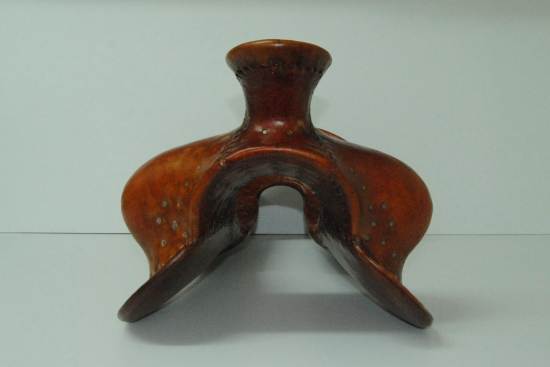
This is the front of a wood post 13" Modified Association tree. It has a hand hole width of 4" with 90 degree bars (remembering, of course, that you can't compare bar angles between makers...) The gullet height on this one is 7 3/4".
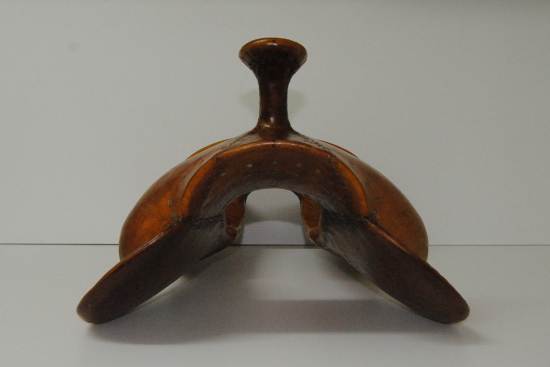
This is the front of a 12" wide Canadian Roper tree. It has a hand hole width of 4 1/4" with 98 degree bars - a much flatter angle. The gullet height on this one is only 7" high. The different styles of fork affect the look of the tree, but you can still see the marked difference in angle at least between the two trees.
So - let's look at the combinations.
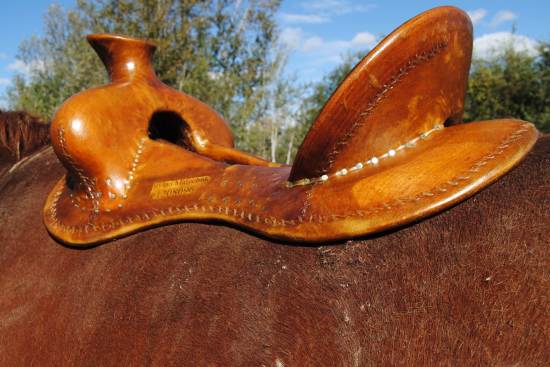
Here is the 4 x 90 tree on Winston. (This is actually the fit we would choose to use on him.) You can see how the bottom edges of the bar round away from him and don't dig in. The bars look to be sitting on his back fairly well.
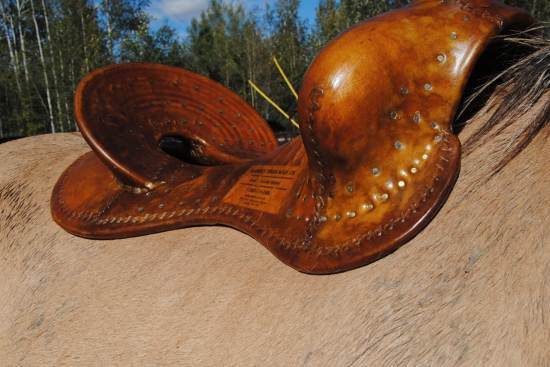
Here is the 4 x 90 tree on Mouse. You can see how the bottom edges of the bar don't dig into him either. They also look to be sitting on his back fairly well. What gives? Does 4 x 90 fit everything?
Well, first of all you have to remember that these are bare trees sitting on horses without weight on them. And then...
You gotta look inside.
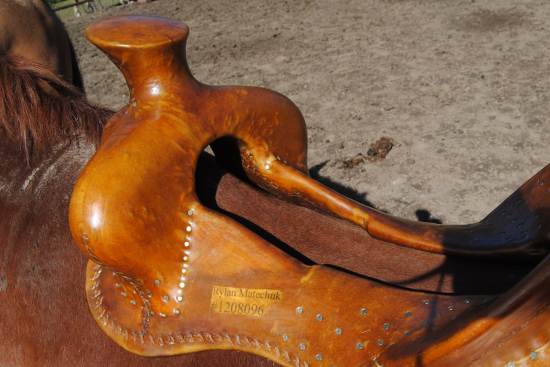
Here is what the bar contact of the 4 x 90 looks like on Winston from the top where you can see the inside of the bars. (By the way, it is really tough to get pictures that show the differences. It is far easier to see - and feel - if you are there with the trees and horses...) The upper part of the front bar pad is off the horse for a short distance, but it starts contacting fairly soon. Having that bar continue up past the contact area makes for a smooth transition from contact to no-contact, rather than having an edge that could become a pressure point.
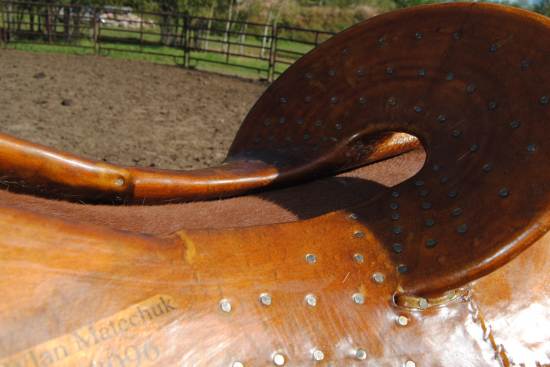
Looking at the inside of the bar under the seat area, again there is a little lifting off the horse as the edge rounds away from him so there is a smooth transition, but the bar is in contact with the horse fairly quickly.
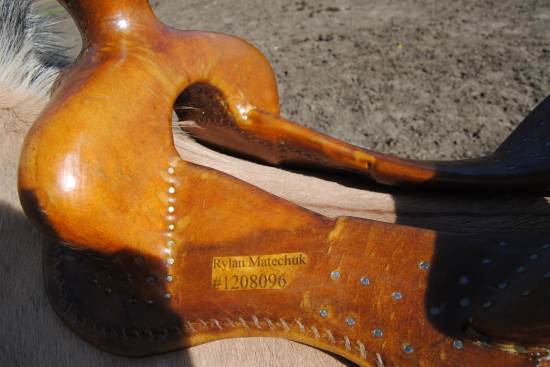
Here is the same tree on Mouse. You can see a whole lot more of the top of the bar than you could on Winston. And we couldn't get a picture that showed the whole story. By feeling the tree on the horse, it was obvious that only about 1 1/2 to maybe 2 inches of the 6 1/2+ inch wide bar pad was actually in contact with the horse. So while the outside edge looked OK, from the inside you can see that this bar angle is way too narrow.
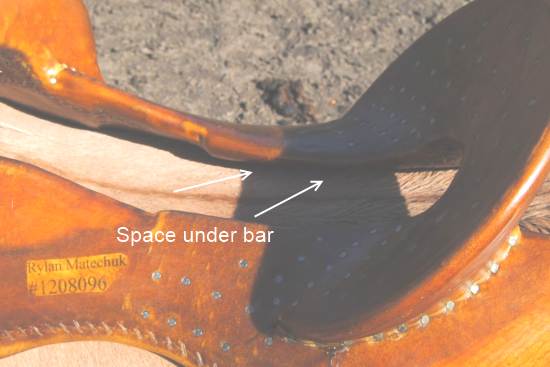
The same thing is true further back. Because the shadow was in the way, I had to lighten the picture up a lot, but I hope you can see how that inside edge is lifted well off the horse all the way back.
What about the other tree?
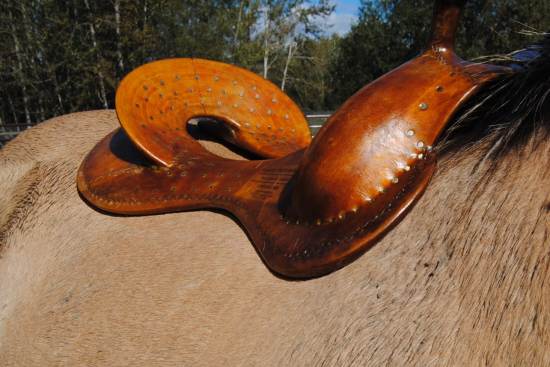
Here is the 4 1/4 x 98 degree tree on Mouse. Looking at the bottom edge, it is looking pretty good. The edges aren't digging in and the bars are looking like they are sitting on his back fairly well.
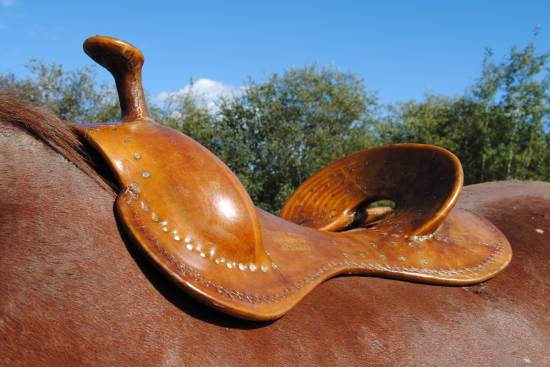
Here is the 4 1/4 x 98 degree tree on Winston. Its pretty obvious that the bottom of the bar is sticking out away from his side with a gap underneath, so it is easy to see that this bar angle is too wide for Winston. (This would be easy to feel if a saddle was built on this tree too, since you can feel the bottom of the bars underneath the skirts quite easily.)
But what about looking from the inside?
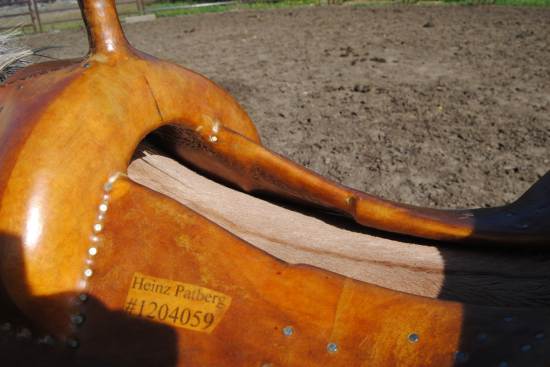
There is obviously much less of that front bar pad visible with this tree on Mouse than there was with the 4 x 90.
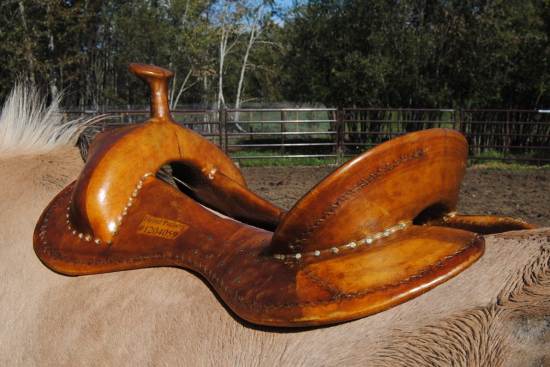
But from another angle, you can see that there is still a fair amount of that upper edge that isn't in contact. While there is dramatically more contact of the front bar pad on the horse with this tree than the 4 x 90, we feel there should still be more angle to the bars to fit this horse ideally. Therefore, when we build a pack tree for him (which is one of the reasons for doing all this) we are going to tip the bars out to 102 degrees.
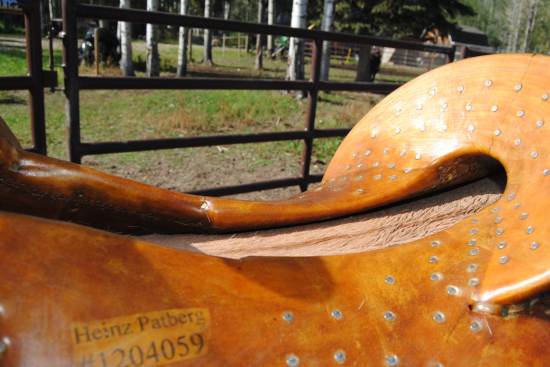
Looking under the seat area, there is still a small space before the rounded edge of the inside of the bar, but not too much. This is what we like to see so that when weight is applied to the saddle and the tree presses into the horse, that contact to no-contact area will be wide and not an sudden edge.
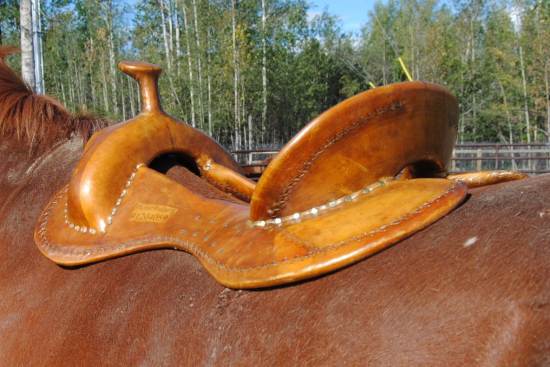
We know from the outside edge at the front that this tree has too wide an angle for Winston, but what does it look like inside? The front bar pad is in contact with the horse pretty much right up to the gullet of the fork. The fork is also very low to the withers. This is partly because of the low handhole/gullet height, but also because the angle is too wide, so the whole tree "falls down" at the front till the upper part of the bar (the narrowest place) comes in contact with the withers as they widen out lower down. This is why trees with too wide an angle put excess pressure on the top edges of the bars. That is the only part in contact with the horse!
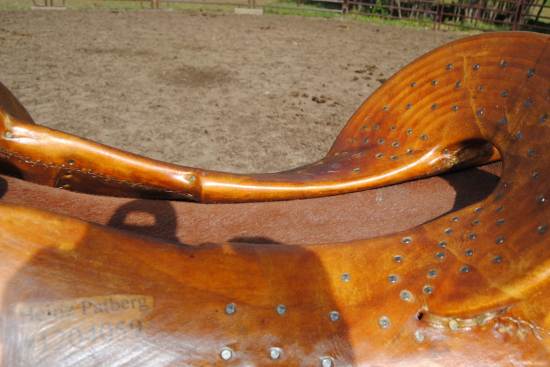
The bar edge under the seat area is right down onto the horse. While the rounded edge will help disperse the pressure a bit, there will still be a fairly sharp contact to no-contact edge here when weight is added to the saddle.
So the take home messages:
1.) Looking at the outside edge of a bar on a horse will tell you if the tree has too wide an angle, but not if it is too narrow. You gotta look inside...
2.) Looking at the inside of a bar will tell you if a tree has too narrow an angle, and give you hints that it is too wide. You gotta look outside too...
3.) Edge relief is important in making as long a transition zone as possible from contact to no-contact. While rounded edges are important, having a short area with no contact right before that edge is a good thing too.
4.) When looking at bare trees on horses, you have to remember there is no weight on them to demonstrate where the higher pressure areas will be so you have to look at the actual contact area on the horse to figure out where they are. The edges won't look like they are "digging in" unless you have sharp edges and dramatically too-narrow angles.
PS. The third horse...
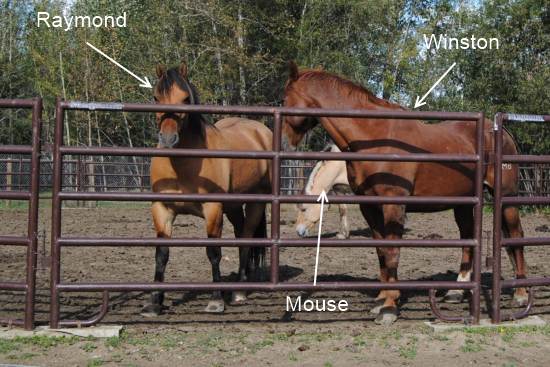
There was a third horse in the corral. His name is Raymond. He's almost the same size as Winston but he has the back shape of Mouse (A - D10, B - D9, C - D10, R 6 -9). So if you were going to fit saddles on these three, Mouse and Raymond could share, but Winston would need something different. Which just goes to show once again that you can't go by size. Saddle fit is all about shape...
